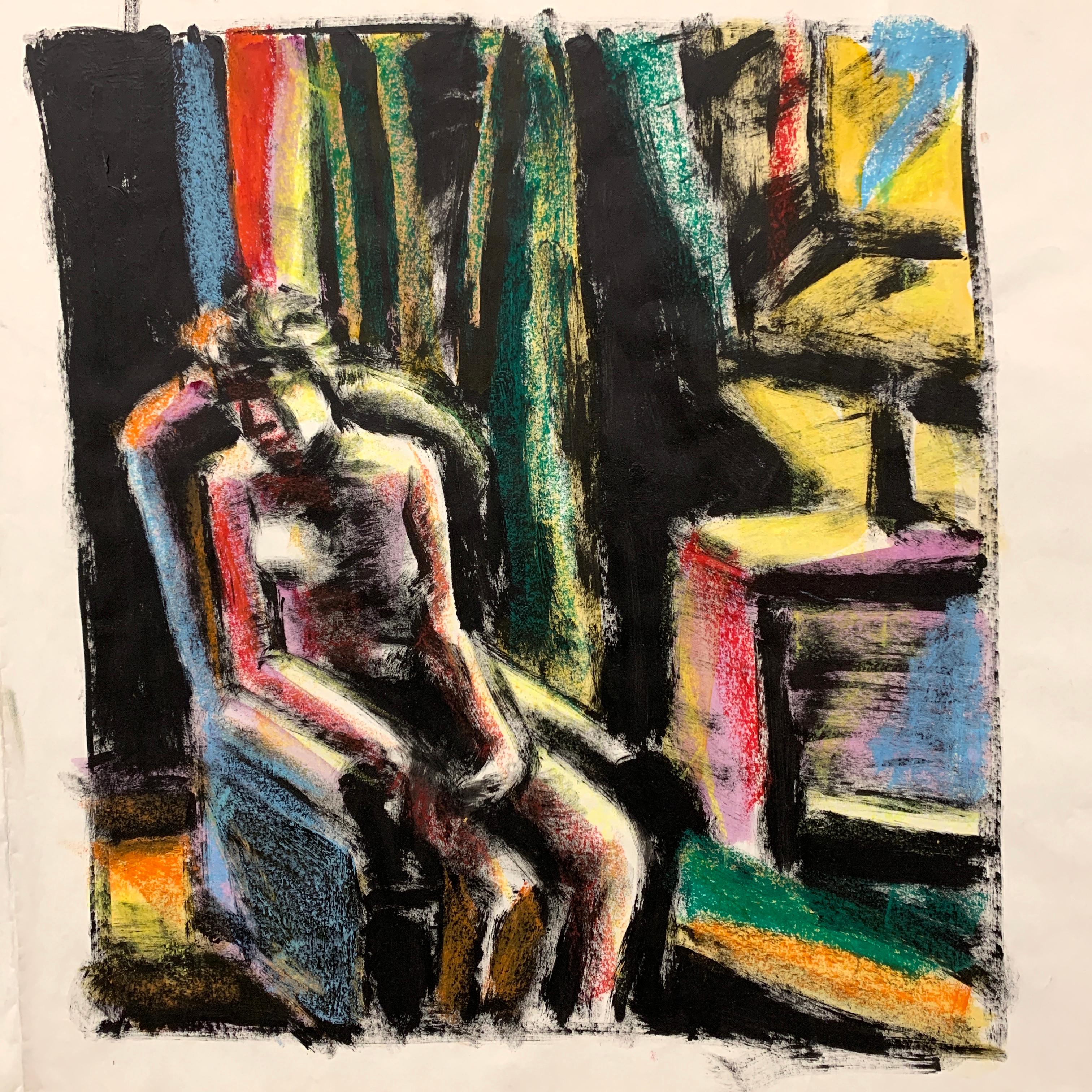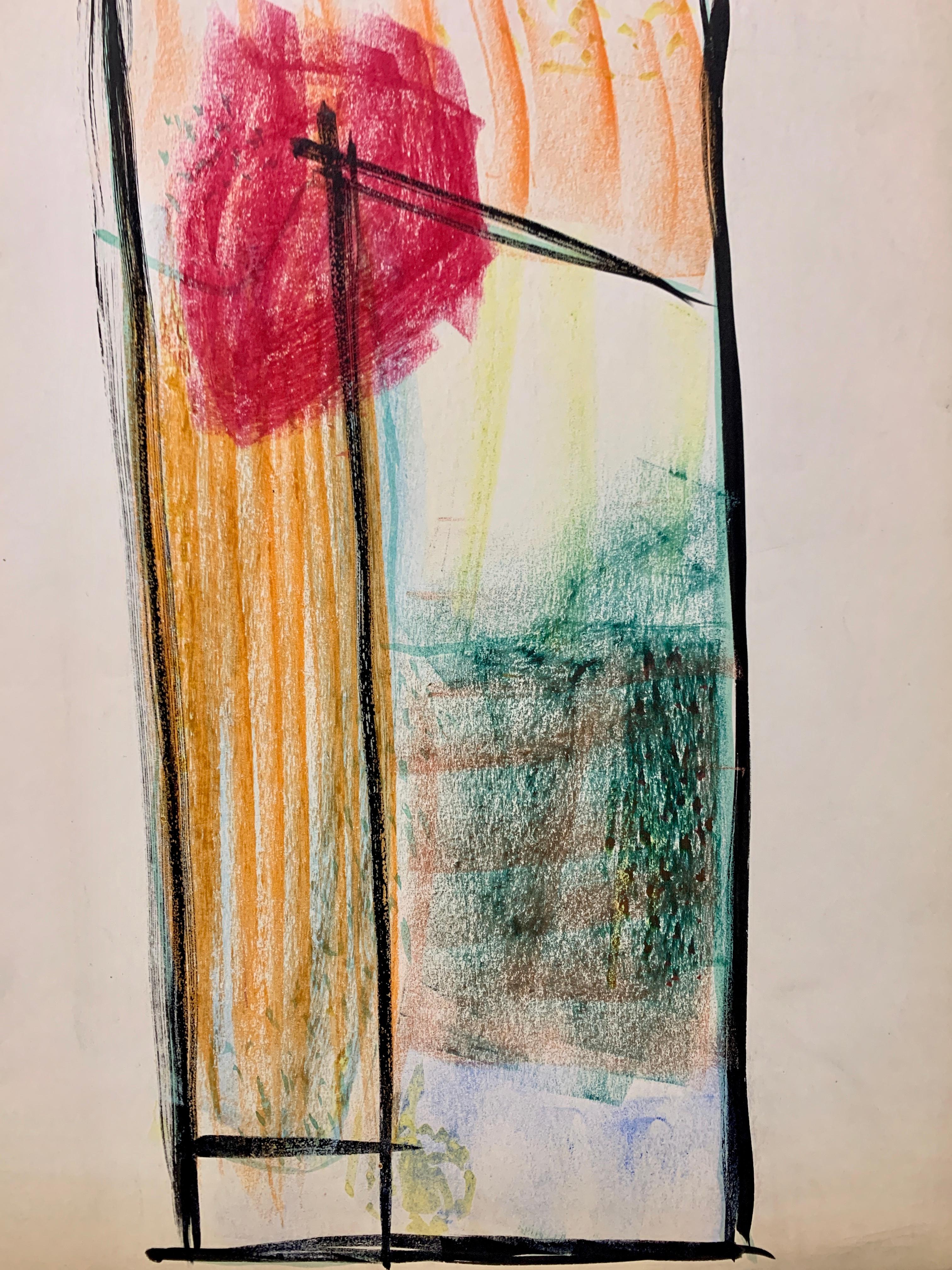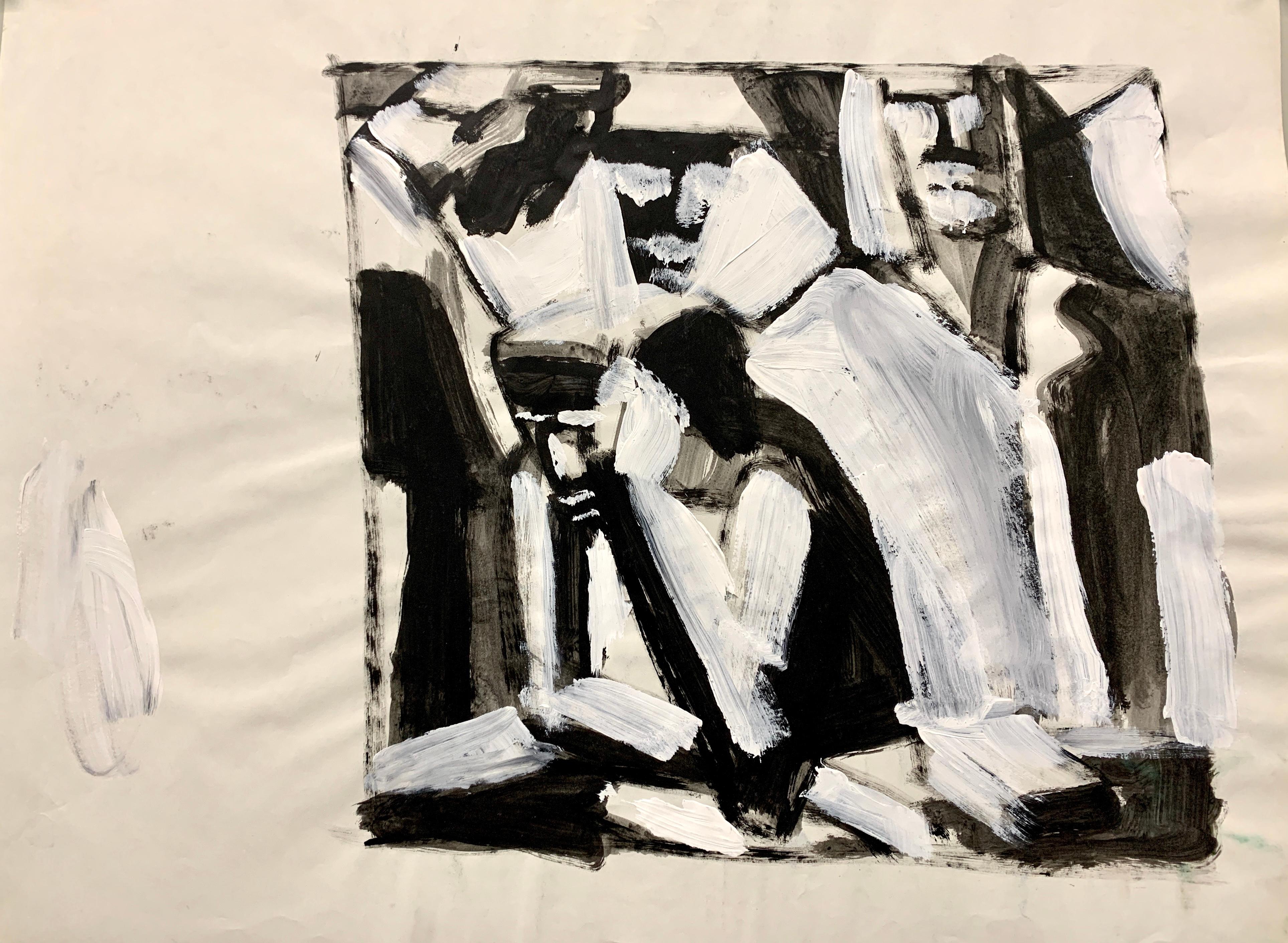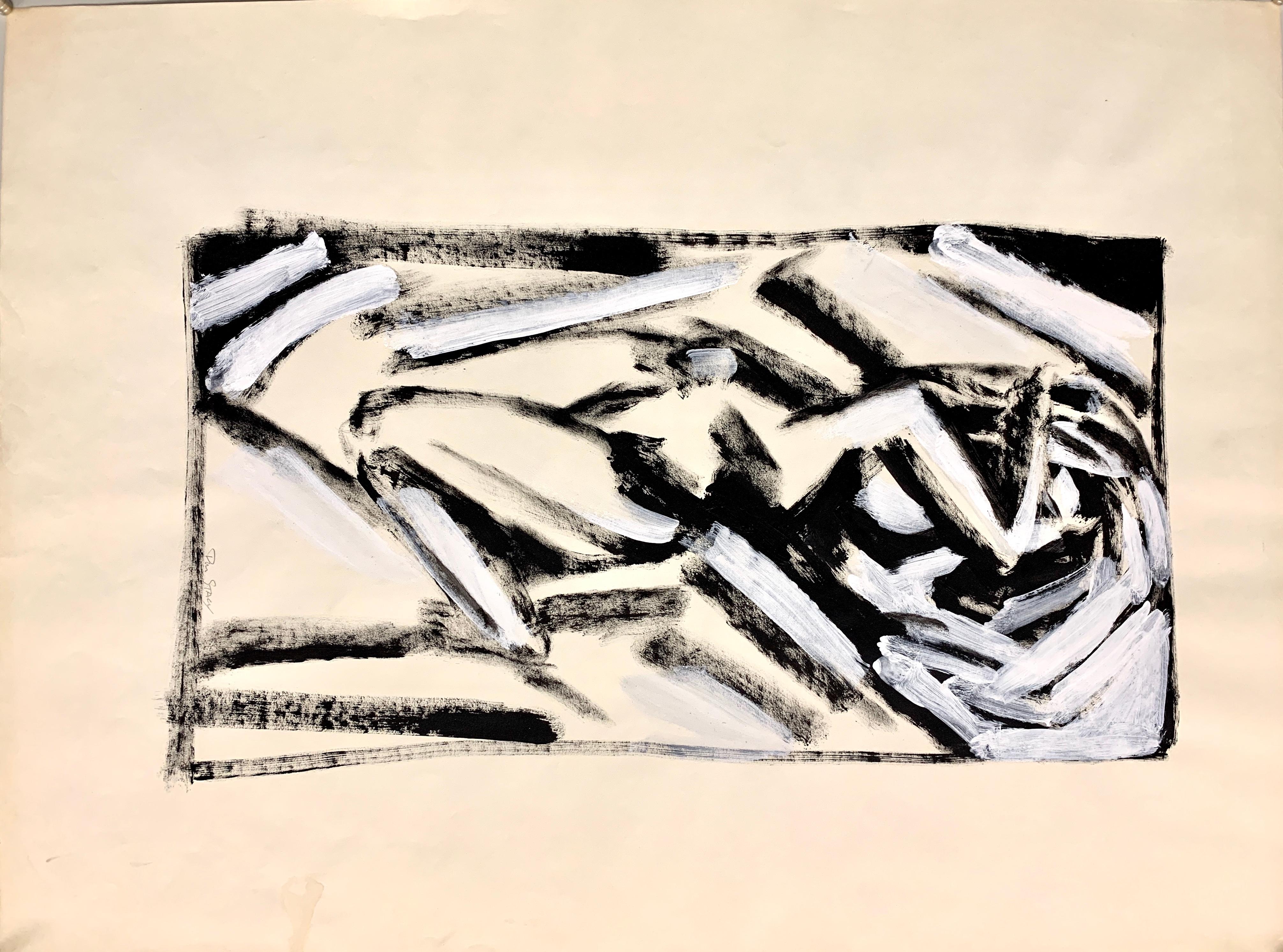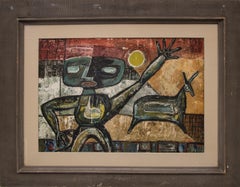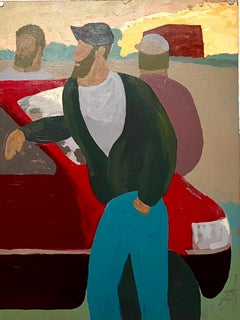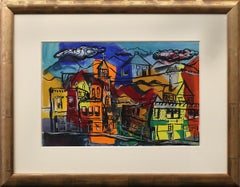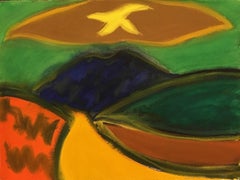
Starred Cloud
View Similar Items
David HayesStarred Cloud1989
1989
About the Item
- Creator:David Hayes (1931 - 2013, American)
- Creation Year:1989
- Dimensions:Height: 22 in (55.88 cm)Width: 30 in (76.2 cm)
- Medium:
- Movement & Style:
- Period:
- Condition:
- Gallery Location:East Hampton, NY
- Reference Number:1stDibs: LU18122068383
David Hayes
David Hayes was born in Hartford, Connecticut, and received an A.B. degree from the University of Notre Dame in 1953 and a MFA degree from Indiana University in 1955, where he studied with David Smith. He has received a postdoctoral Fulbright award and a Guggenheim Fellowship. He is a recipient of the Logan Prize for Sculpture and an award from the National Institute of Arts and Letters. He has had over 300 exhibitions and is included in over 100 institutional collections, including that of the Museum of Modern Art and the Guggenheim Museum in New York. In 2007 was conferred an honorary Doctor of Humane Letters degree by Albertus Magnus College. He worked in Coventry, Connecticut, and died April 9, 2013 of leukemia at the age of 82, four days after his final opening.
- Fetishes, 1940s Abstract Figurative Southwestern Mixed Media Painting, Red GrayBy Howard SchleeterLocated in Denver, COAn original gouache and wax painting by New Mexico modernist, Howard Schleeter (1903-1976) signed and dated lower right from November 18, 1949. Presented in a custom frame created b...Category
1940s American Modern Abstract Paintings
MaterialsWax, Gouache, Archival Paper
- Large Hudson River Figurative Modernist Landscape Oil Painting Edward AvedisianBy Edward AvedisianLocated in Surfside, FLEdward Avedisian ( 1936-2007 ) Gouache or oil on paper, 3 guys around a car, hand signed in paint lower left, Measures 30"x 22.5" Edward Avedisian (June 15, 1936, Lowell, Massachusetts – August 17, 2007, Philmont, New York) was an American abstract painter who came into prominence during the 1960s. His work was initially associated with Color field painting and in the late 1960s with Lyrical Abstraction and Abstract Expressionism. He studied art at the School of the Museum of Fine Arts, Boston. By the late 1950s he moved to New York City. Between 1958 and 1963 Avedisian had six solo shows in New York. In 1958 he initially showed at the Hansa Gallery, then he had three shows at the Tibor de Nagy Gallery and in 1962 and 1963 at the Robert Elkon Gallery. He continued to show at the Robert Elkon Gallery almost every year until 1975. During the 1960s his work was broadly visible in the contemporary art world. He joined the dynamic art scene in Greenwich Village, frequenting the Cedar Tavern on Tenth Street, associating with the critic Clement Greenberg, and joining a new generation of abstract artists, such as Darby Bannard, Kenneth Noland, Jules Olitski, and Larry Poons. Avedisian was among the leading figures to emerge in the New York art world during the 1960s. An artist who mixed the hot colors of Pop Art with the cool, more analytical qualities of Color Field painting, he was instrumental in the exploration of new abstract methods to examine the primacy of optical experience. One of his paintings was appeared on the cover of Artforum, in 1969, his work was included in the 1965 Op Art The Responsive Eye exhibition at the Museum of Modern Art and in four annuals at the Whitney Museum of American Art. His paintings were widely sought after by collectors and acquired by major museums in New York and elsewhere. He has been exhibited in prominent galleries, such as the Anita Shapolsky Gallery and the Berry Campbell Gallery in New York City. Edward Avedisian was known for his brightly colored, boldly composed canvases that combined Minimalism's rigor, Pop art exuberance and the saturated tones of Color Field painting. Roberta Smith of the NYT writes of Avedesian: "Edward Avedisian helped establish the hotly colored, but emotionally cool, abstract painting that succeeded Abstract Expressionism in the early 1960s. This young luminary harnessed elements of minimalism, pop, and color field painting to create prominent works of epic proportions that energized the New York art scene of the time." In 1996 Avedisian showed his paintings from the 1960s at the Mitchell Algus Gallery, then in SoHo. His last show, dominated by recent landscapes, was in 2003 at the Algus gallery, now in Chelsea. Selected Exhibitions: Op Art: The Responsive Eye, at the Museum of Modern Art, Whitney Museum’s Young America 1965 Expo 67, held in Montreal, Canada. Six Painters (along with Darby Bannard, Dan Christensen, Ron Davis...Category
20th Century American Modern Landscape Paintings
MaterialsOil, Gouache, Archival Paper
- Central City, Colorado, 1950s Semi-Abstract Cityscape Gouache Painting, Red BlueLocated in Denver, CO'Central City, Colorado' by Leonard Silverstein is an original gouache on paper from 1954. Hand signed, titled, and dated by the artist in the lower right...Category
1950s American Modern Landscape Paintings
MaterialsGouache, Archival Paper
- Untitled [Abstraction]By George L.K. MorrisLocated in New York, NYGouache on paper, 18 7/8 x 14 3/4 in. Signed (at lower right): Morris; (with monogram, on the back): GLKM [monogram] / 1932 [sic] Executed circa late 1940s A passionate advocate of abstract art during the 1930s and 1940s, George L. K. Morris was active as a painter, sculptor, editor, and critic. An erudite man with an internationalist point of view, Morris eschewed the social, political, and figural concerns that preoccupied so many artists of Depression-era America, believing that painters should focus their attention on the beauty, refinement, and simplicity of pure form instead. His goal, he said, was “to wedge the expression further and further into the confines of the canvas until every shape takes on a spatial meaning” (as quoted in Ward Jackson, “George L. K. Morris: Forty Years of Abstract Art,” Art Journal 32 [Winter 1972–73], p. 150). Born into an affluent family in New York City, Morris was a descendent of General Lewis Morris, a signer of the Declaration of Independence. From 1918 until 1924, he attended the Groton School in Connecticut, studying classics and art. He continued to focus on literature and art while attending Yale University (1924–28), an experience that prepared him well for his future activity as an artist-critic. After graduating in 1928, Morris studied at the Art Students League of New York, working under the realist painters John Sloan and Kenneth Hayes Miller, as well as Jan Matulka, the only modernist on the faculty. In the spring of 1929, Morris traveled to Paris with Albert E. Gallatin, a family friend and fellow painter who introduced him to leading members of the Parisian avant-garde, including Jean Arp, Pablo Picasso, Georges Braque, Jean Hélion, and Piet Mondrian. Morris also took classes at the Académie Moderne, studying under Fernand Léger and Amédée Ozenfant, important exponents of Synthetic Cubism who influenced his aesthetic development. Indeed, after experimenting with the simplified forms of Modernism for a few years, Morris moved on to abstraction by 1934, adopting a hard-edged, geometric approach inspired by Leger’s cubist style and the biomorphic shapes of Arp and Joan Miró. Following his return to New York in 1930, Morris built a white-walled, open-spaced studio (inspired by that of Ozenfant, which had been designed by Le Corbusier) on the grounds of Brockhurst, his parents’ 46-acre estate in Lenox, Massachusetts. In 1935, he married the painter and collagist Estelle “Suzy...Category
1940s American Modern Abstract Paintings
MaterialsPaper, Gouache
- Mid Century Fruit Still Life Gouache Painting Bay Area ArtistLocated in Arp, TXFrom the estate of Jerry Opper and Ruth Opper Fruit Still Life c. 1950's Gouache on Paper 12" x 18", tiger maple wood frame 18.5"x1"x22.25" unsigned Early ...Category
Mid-20th Century American Modern Still-life Paintings
MaterialsPaper, Gouache
- 1950s "Rectangle" Mid Century Abstract Gouache PaintingLocated in Arp, TXOpper Estate Maroon Abstract c. 1940-1950's Gouache on Paper 15" x 18" Unframed From the estate of Ruth Friedmann Opper & Jerry Opper. Ruth was the daughter of Bauhaus artist, Gustav Friedmann. San Francisco Abstract Expression A free-spirited wave of creative energy swept through the San Francisco art community after World War II. Challenging accepted modes of painting, Abstract Expressionists produced highly experimental works that jolted the public out of its postwar complacency. Abstract Expressionism resulted from a broad collective impulse rather than the inspiration of a small band of New York artists. Documenting the interchanges between the East and West Coasts, she cites areas of mutual influence and shows the impact of San Francisco on the New York School, including artists such as Mark Rothko and Ad Reinhardt. San Francisco's Beat poets...Category
Mid-20th Century American Modern Abstract Paintings
MaterialsPaper, Gouache

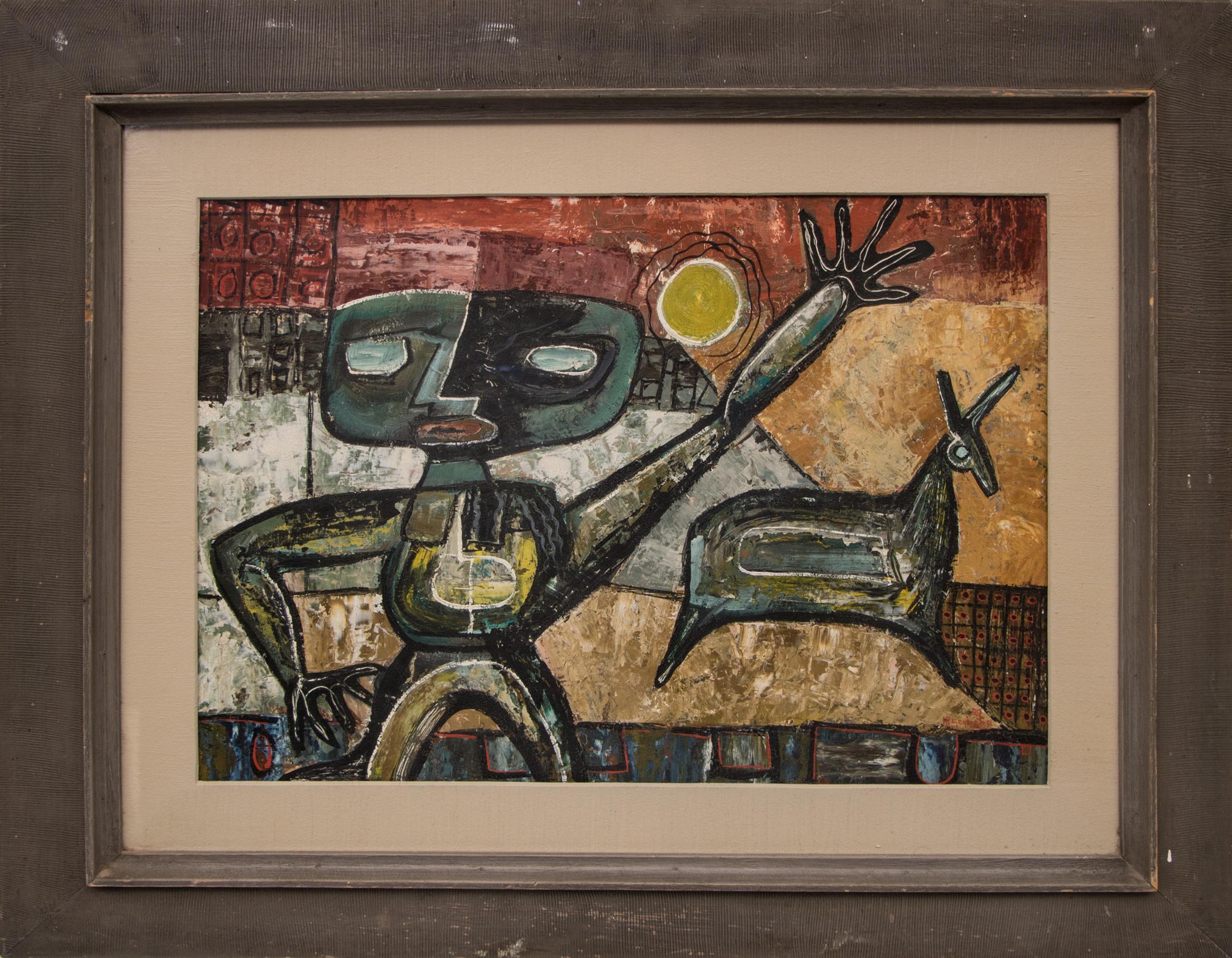
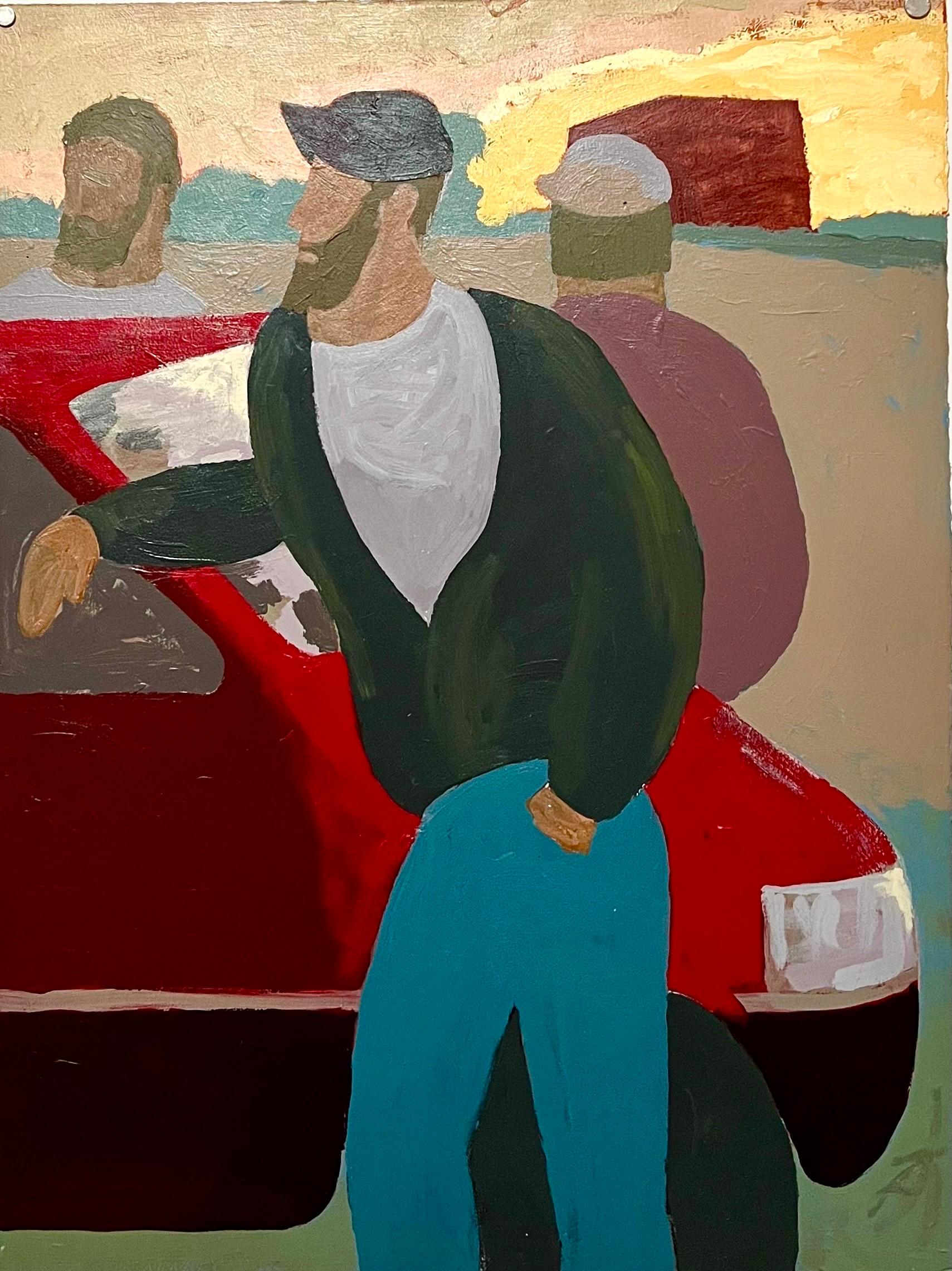
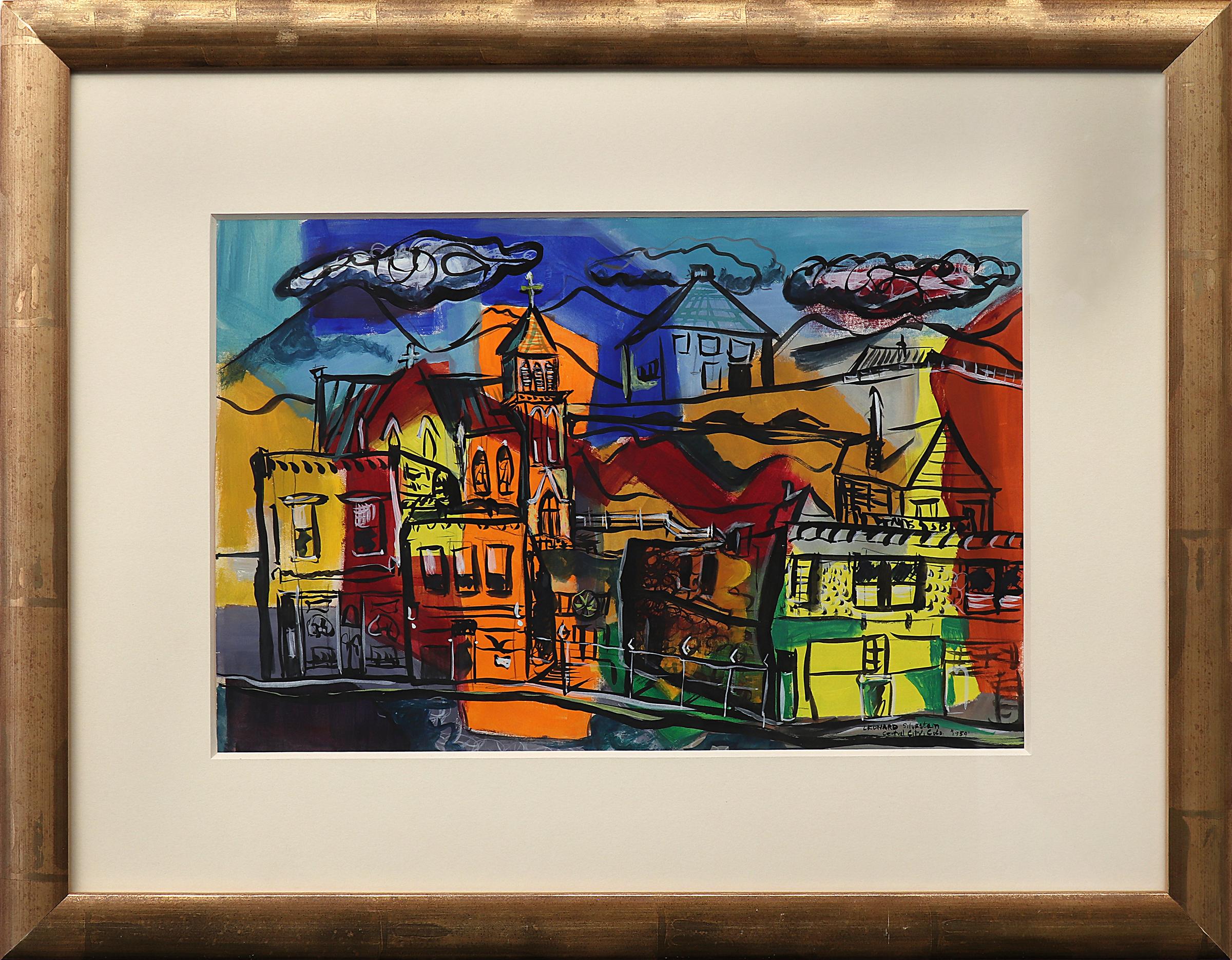
![Untitled [Abstraction]](https://a.1stdibscdn.com/george-lk-morris-1905-1975-american-paintings-untitled-abstraction-for-sale/a_23/1652214284908/APG_8941_unfr_master.jpg)

